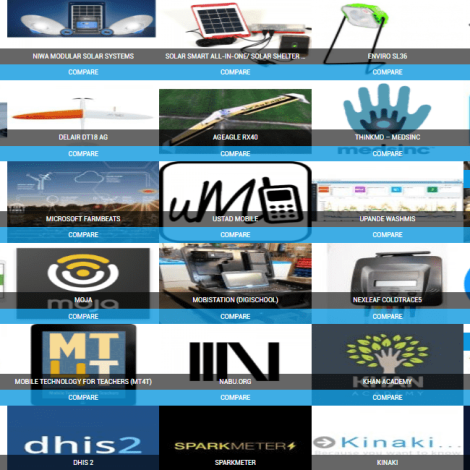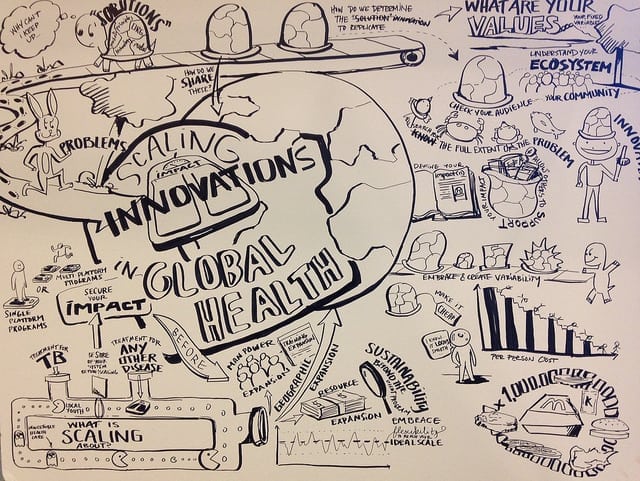Investors have turned their attention and opened their checkbooks to social startups working in developing countries and underserved communities. Hardworking founders have begun to raise as much as $1-2 million in seed funding. That kind of capital is hard for impact hardware startups to attract. But after a long, boot-strapped slog that starts with a prototype and a dream, it is possible.
Once they get to that level, startups may find that raising subsequent rounds of funding becomes easier. Select maturing startups are cashing in with series A and B financing reaching into the tens of millions of US dollars.
The sums are respectable for any kind of business, and all the more encouraging to know that these businesses are doing good where goodness may be needed most. Investors may find themselves driven by generosity, but also by the bottom line. The two driving forces taken together comprise the philosophy of impact investors, that doing good doesn’t have to be charity, and that you can make money without compromising your values. And this often benefits the startups they invest in because of impact investors’ tendency to work closely with startups as partners, which is essential to helping the businesses succeed. A feature in Demand magazine reveals how much investors work alongside startups to support them, Getting Makers to Market: The Impact Investors Helping Hardware.
The table and graphic below exemplify ways that ventures in the technology for development space raise money, and succeed, because they’re tapping into an underserved market. That market is not negligible, pegged now at about $228 billion according to the Global Impact Investing Network. It seems that the global business community has left money on the table in emerging economies. That said, it is still not easy for impact technology to raise funds. Startups have it pretty tough, actually. GIIN’s Annual Impact Investor Survey provides a good baseline for where impact investing stands today. This is the source commonly used in the industry, as it reflects a core group of private impact investors.
Take a look at these numbers, from DEMAND Magazine (Demand is a publication of the American Society of Mechanical Engineers, which is a founding member of Engineering for Change).  A sampling of startups reveals the kinds of sums that enterprises in this space attract. To be clear, this space is that niche of essential products and services for customers in the world’s overlooked communities. The niche is narrow, but deeply varied. Below, a snapshot of results from financing rounds and impact statistics illustrates some of the potential in the sector today.
A sampling of startups reveals the kinds of sums that enterprises in this space attract. To be clear, this space is that niche of essential products and services for customers in the world’s overlooked communities. The niche is narrow, but deeply varied. Below, a snapshot of results from financing rounds and impact statistics illustrates some of the potential in the sector today. 
Let’s take a longer look at some of those companies. Engineering for Change’s Solutions Library lists information on essential technologies for underserved communities. The format for each is standardized and updated with research and interviews for side-by-side comparisons with similar products. These are a few of the entries that correspond to the chart above, with news articles if available for even more context.
DJI Drones
Andrew Schroeder, Co-Founder of WeRobotics and Director of Research and Analysis at Direct Relief, explores the social good potential for drones, including the DJI Phantom I pictured here. Read the interview: Drones and Other Robotics for Social Good: Five Questions with Andrew Schroeder
BBOXX and the BB17 Kit
Bboxx builds solar-powered kiosks and kits like this BB17, a plug and play solar kit that can power lights, televisions, radios and mobile phones. The system has a 17 Ah battery and comes with two USB outlets and four 12V DC outputs. The system draws power through 15-50W solar panels. Important for maintenance and longevity of the hardware, the system can connect to a mobile data network and send performance and usage data. This functionality is tied to Bbox’s Smart Solar platform which enables remote control and monitoring of products. Bboxx is located in London, England with distributors throughout the world. Bboxx spun out of Imperial College and a group named e.quinox.

Husk and the Evolution of Power Generation
When Husk Power launched in southern India in 2008, the company built gasifiers that consumed rice husks, a waste product from surrounding rice paddies. As it grew, so did India’s economy, and soon its customers began to demand more electricity and more reliability in their power supply. At the same time, the costs of solar power began to drop, threatening Husk’s business. Rather than cave, the company has embraced solar and integrated it with gasifiers for round-the-clock energy. Husk’s co-founder and sole remaining founding member Manoj Sinha shares lessons from a decade of serving the world’s energy poor. Inevitable change: how Husk Power embraced adaptability
Biolite and the HomeStove
BioLite builds clean-burning, efficient stoves for kitchens in emerging economies and smaller models for backpackers and campers anywhere in the world. Sales of the camping stoves help subsidize the cost of kitchen stoves, such as the HomeStove pictured. HomeStove is a Rocket-type and single burner cookstove that generates electricity while reducing smoke emissions by 90 percent and fuel usage by 50percent. It has a patent-protected Direct Conduction Thermoelectric System that co-generates electricity from the flame and enables users to charge mobile phones and LED lights by its USB port.
 The Sure Chill Company and Its Vaccine Refrigerators
The Sure Chill Company and Its Vaccine Refrigerators
Sure Chill Refrigerators regulate internal temperature and protect vaccine vials from ice to keep vaccines cold, but not frozen, during delivery. The refrigerator works by surrounding the vaccine vials with cold water.
Tizeti: the Nigerian startup providing carbon-friendly WiFi
Africa’s Internet usage still lags behind most of the world. One startup is introducing a new concept to its home city of Lagos: unlimited Wi-Fi, powered by the sun.
Simprints and Its Fingerprinting Device that Makes Identities
Simprints seeks to break the identification bottleneck. The non-profit is building an affordable, secure, rugged, open-source fingerprint system that works in the world’s toughest settings. The package includes a Bluetooth finger print scanner, an Android application and a SaaS application to collect and store fingerprints. The identities provided open doors to digital medical records, banking, voting and other activities that are difficult without official records.
Additional Resources
What it takes to develop a prototype into a product
The engineering and design firm D-Rev announced the public launch of its extremely low-cost ReMotion prosthetic knee last month. The news culminated a seven-year journey from idea to prototype, field tests, redesigns and finally the product that we see now. A look at that process shows the right way to build a product that changes lives and that people actually use. This is a brief history of a new prosthetic knee that serves amputees in that huge market, 4-billion strong, of people who earn $4 or less per day.
From Baby Monitors to Fishing Fleets: Ten Upgrades with Remote Sensors
No. 3: Nexleaf’s StoveTrace. How can a stove designer know if the technology is working? Nexleaf Analytics created StoveTrace to track usage and fuel consumption. The sensors can run indefinitely when connected to the household’s power or solar panels.
As Costs Fall, Designers Take a New Look at Solar Irrigation
Proximity Design’s team faced unique constraints when it began designing the Lotus, a solar-powered water pump for farms in Myanmar. The obstacles they confronted highlighted the high degree of location- and context-specificity in affordable product design. In addition to cost and performance, the team’s design was limited by Myanmar’s unique wells, most of which are only two inches wide. This meant Proximity had to design a high-powered, low-cost motor that could fit in a very narrow space.
Five Questions with Anand Shah
Using leading edge, low-cost technology and an important vision, Anand Shah is solving the problem of clean water scarcity in rural India. As CEO of the Piramal Foundation, his company owns and sells rights to the Sarvajal brand of clean water. Sarvajal’s franchisees filter water at the point of sale, monitoring production, quality and other data at all of its sites in real time using sensors that send SMS updates. Customers buy clean water in large jugs from their local filtration unit or in whatever smaller quantities they might want at water “ATMs.” Mr. Shah answers five questions.







